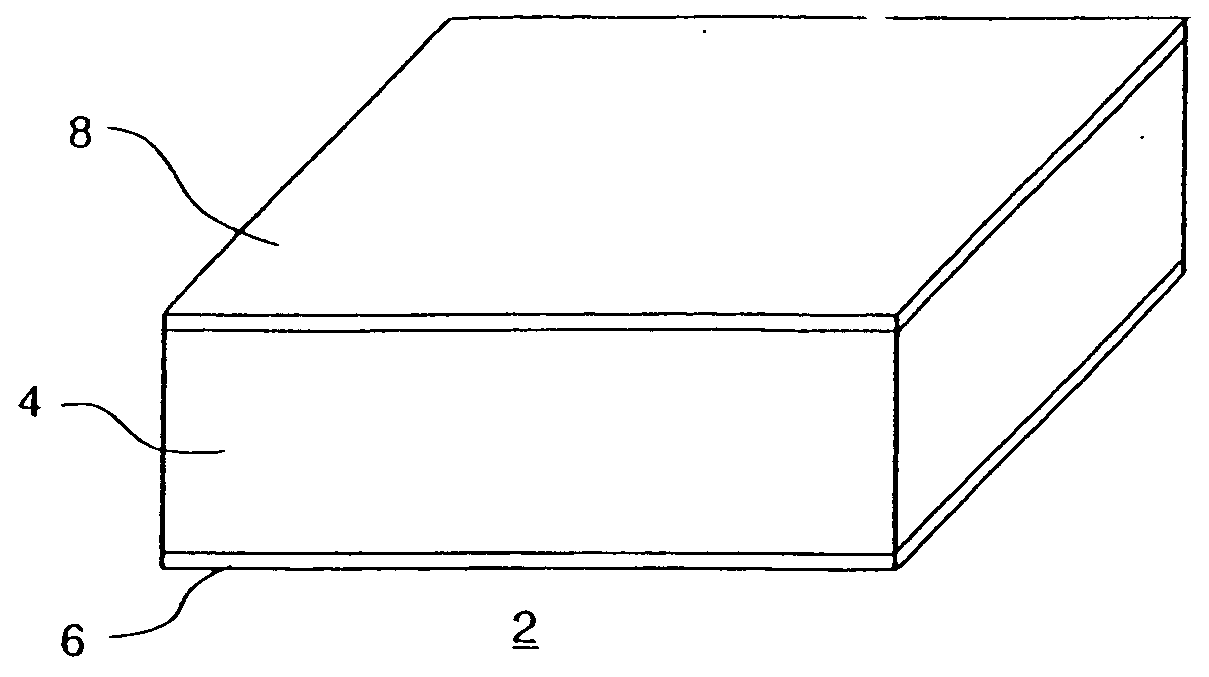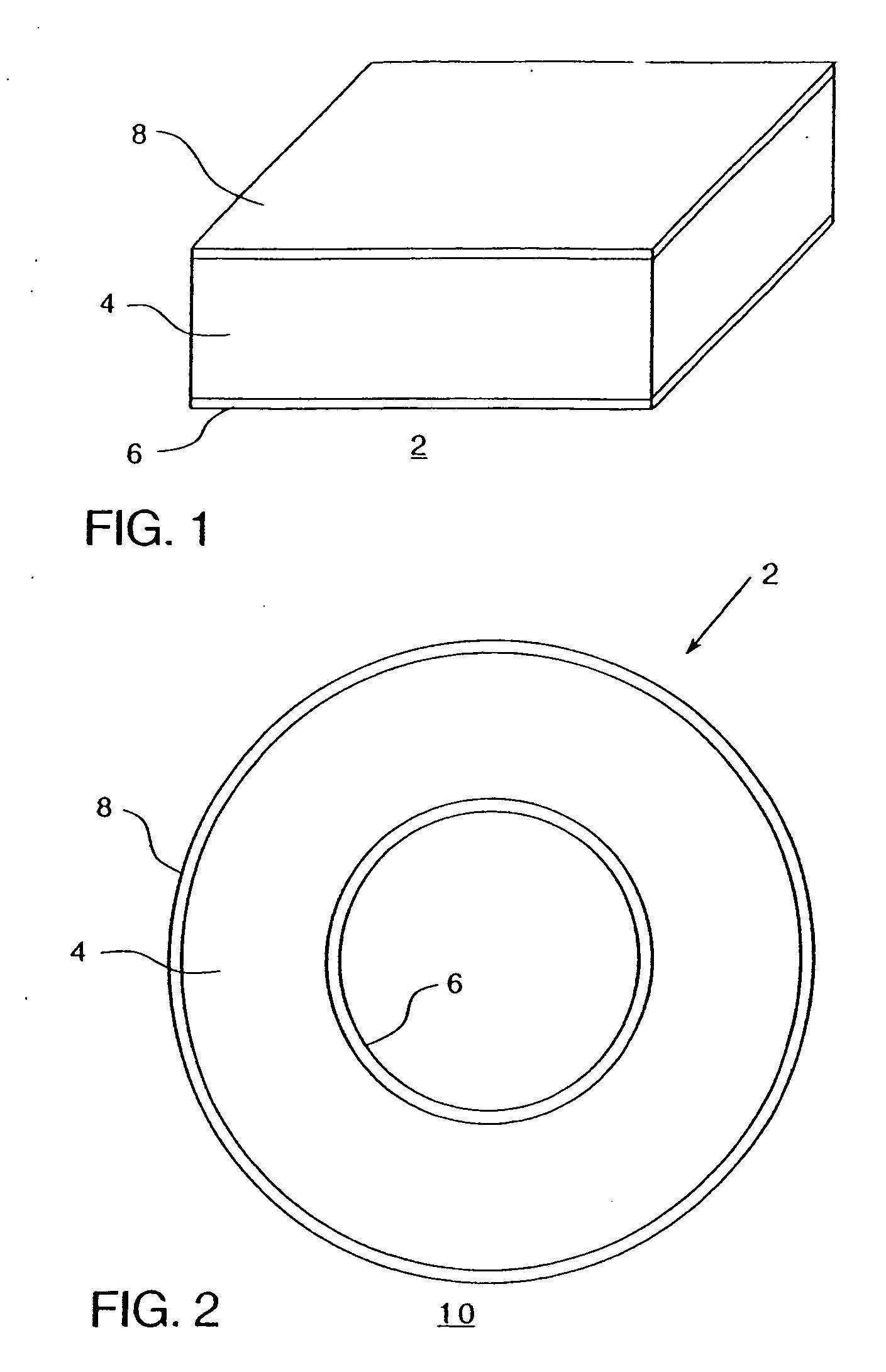High-strength aluminum alloy composite and resultant product
a technology of aluminum alloy and composites, applied in the field of aluminum alloy composites, can solve the problems of affecting the brazing ability of the tubestock, unable to follow the strengthening, and the material strength is relatively low, and achieves good brazing performance, good brazing effect, and effective corrosion resistan
- Summary
- Abstract
- Description
- Claims
- Application Information
AI Technical Summary
Benefits of technology
Problems solved by technology
Method used
Image
Examples
example
[0049] As an example of the aluminum alloy composite of the present invention, a 0.25 mm tubestock was fabricated having the following core, water-side liner and braze liner compositions:
TABLE 1%Compo-thick-nentSiFeCuMnMgZnTinessCore0.220.140.560.840.190.020.1875Water-0.270.160.00.01.723.450.0115sidelinerBrazeAA434310liner
[0050] Processing of the tubestock involved casting the individual core, water-side liner and braze liner components as laboratory book mold ingots approximately dimensioned 2″×10″×14″. The core ingot was homogenized at bout 563° C. (1045° F.) prior to further processing. However, such homogenation is an optional step. A hot-rolling practice was applied to the water-side liner, in which it was heated to a higher temperature than typically employed in the known prior art, i.e., about 560° C. (1040° F.) and then, starting at that temperature, was hot-rolled to the appropriate cladding gauge. The braze liner was homogenized at about 490° C. (914° F.) prior to hot ro...
PUM
| Property | Measurement | Unit |
|---|---|---|
| temperature | aaaaa | aaaaa |
| temperature | aaaaa | aaaaa |
| total thickness | aaaaa | aaaaa |
Abstract
Description
Claims
Application Information
 Login to View More
Login to View More - R&D
- Intellectual Property
- Life Sciences
- Materials
- Tech Scout
- Unparalleled Data Quality
- Higher Quality Content
- 60% Fewer Hallucinations
Browse by: Latest US Patents, China's latest patents, Technical Efficacy Thesaurus, Application Domain, Technology Topic, Popular Technical Reports.
© 2025 PatSnap. All rights reserved.Legal|Privacy policy|Modern Slavery Act Transparency Statement|Sitemap|About US| Contact US: help@patsnap.com


